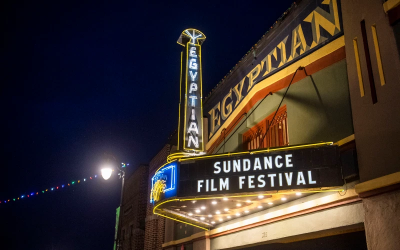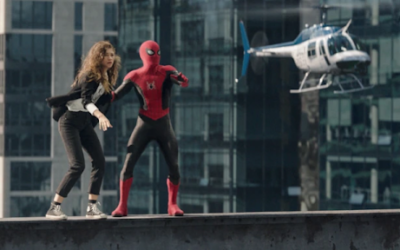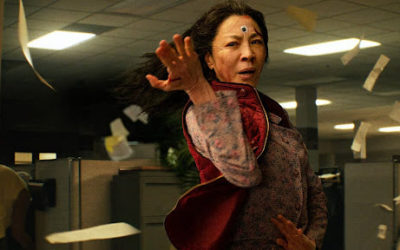Source: Variety
In many respects, the month of December, the one to close out the year 2021, should be a time of great celebration for the film industry, especially for the hundreds of movie theaters that will be operating during this time. This final month of the year will see a plethora of highly anticipated films that are expected to draw in big crowds, the most notable being the superhero sequel “Spider-Man: No Way Home”, for which online ticket sales began Monday, November 29th and reportedly caused AMC, Fandango, and other websites to crash as a result of high traffic from those eager to see the film. Of course, there are other films to look forward to as well, including the Steven Spielberg directed musical “West Side Story”, the animated comedy sequel “Sing 2”, and the science fiction sequel “The Matrix Resurrections”. These are still but a small handful of examples of what one can expect from their local theater in December, and with such variety, one would think that ending the year on a high note would mean that all the problems that theaters have faced over the past year are over and done with.
Unfortunately, even with everything that will be coming out in December, it may not be enough to encourage audiences to keep coming back to the movies on a regular basis, at least when compared to how much they were doing so before the start of the COVID-19 pandemic. This is what has been suggested by a recent survey performed by three collaborating organizations: Quorum, which specializes in film research, Cultique, a firm that works in brand consulting, and Fanthropology, an agency that focuses on research and strategy. In their survey, over 2,500 individuals who were considered regular pre-pandemic moviegoers were asked about their opinions regarding the current state of cinema and their willingness to go back to movie theaters. As it turns out, nearly half those surveyed (about 49% to be precise) claimed that they no longer go to the movies like they used to. Given the size of the survey when compared to the overall national population, this might not appear to be much cause for alarm, but it still reflects how many people in the United States are still hesitant to go back to theaters, even with the appeal of the big-budget blockbusters that (as many claim) are best experienced on the big screen.
What is behind the reluctance to go back to the movies? According to the authors of the study, the main concerns can more or less be boiled down to two issues. The first of these is safety, specifically the safety of going to a public venue during a time when there is still a pandemic and the COVID-19 virus still lingers throughout much of the nation. This was an issue cited by many former moviegoers who participated in the survey, 59% of which claimed that they don’t feel safe going to the movies. The second issue is price, an issue that has long plagued the moviegoing experience even before the start of the pandemic. Rising ticket sales continue to frustrate even the most casual of film-watchers, and about 65% of survey participants claimed that snacks such as popcorn are much more expensive than they are willing to pay for.
From what has been referenced, the solutions to movie theaters’ woes seem fairly obvious: make going to the movies safer and less expensive. Achieving the former would most likely be fairly easy to achieve, since requiring proof of COVID-19 vaccination would not require much to enforce and may encourage those who are skeptical about theater safety. In fact, 33% of survey respondents stated that they would feel significantly more comfortable going to a movie theater if audiences were required to prove that they have been vaccinated, while another 30% claimed that they would be fine with there being a vaccination requirement. Granted, 20% of those surveyed expressed unwillingness to show proof of vaccination, claiming it to be an infringement on their rights, but such people are outnumbered (at least according to the survey), so establishing a vaccination mandate should be more helpful than harmful for theaters. In fact, many cities such as New York and Los Angeles already require proof of vaccination to attend public venues and events, so there is already precedent for theaters adopting such a policy and encouraging people to go to the movies without having to worry about the threat of COVID.
Making going to the movies less expensive, however, might be a bit of a challenge. Because ticket sales are split between movie theaters and movie studios (with the latter often taking a bigger cut of the profits depending on the film), it’s difficult for theaters to break even on ticket sales alone. This is the reason why concessions tend to appear more costly than they should be: they are what allow movie theaters to generate enough revenue to stay in business. Then again, if lower prices is not a feasible option, then perhaps providing a greater variety of better and higher quality foods and drinks may be more effective in getting people to spend their money on such items. This was a topic raised by many of the 65% of survey respondents who complained about concessions being too expensive, suggesting that improving what’s available at the concession stand, including more alcoholic drinks and healthier food options, would be worth paying more than the standard popcorn and soda that have long been staples of the film-viewing experience.
For all the negativity that this survey has revealed about people’s willingness to go back to the movies though, some of the results have proven to lean more toward the optimistic side. Approximately 58% of those who have yet to return to theaters claim that they do intend to do so at some point in the future, well above the 16% who say that they have not gone to the theaters since the start of the pandemic and do not plan to any time soon. Still, if there is any major takeaway from this survey, it’s that theaters need to make major changes if they want to see their revenue return to where it was before the pandemic. Some of these changes may be harder to implement than others, but they are nonetheless necessary if theaters are to survive a media landscape that is changing faster than ever. As stated in the report, “the clock is ticking… the longer exhibition takes to address these issues, the more likely it is that non-theater-going behavior will be set.”




